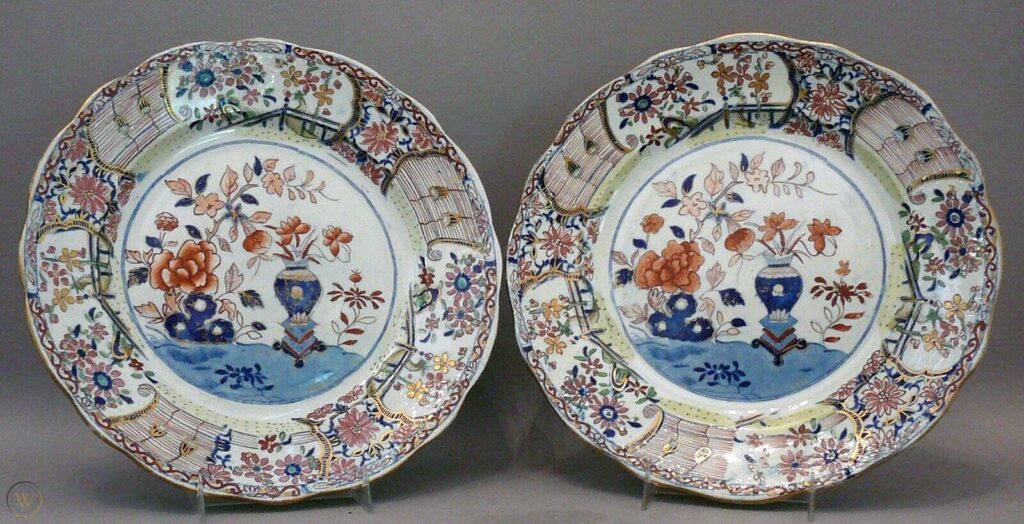
While most people have heard of ironstone, a heavy, earthenware pottery that’s durable and stylish, many don’t realize that there is no iron in it. Still, the name fits because of the pottery’s hardness and durability. In 1800, the first patent was issued to the Turner family in Staffordshire, England; however, they originally called it “Turner’s Patent” with the product dubbed “Stone China.” By 1806, it seems Turner had given up on the business and turned his patent over to Joseph Spode, who called it “New Stone.” In July of 1813, Charles James Mason was granted a patent for “Ironstone China.” His father, Miles Mason, had been heavily involved in trade with China but also found himself involved in a ring of price-fixing in the twice-yearly auctions of imported Chinese porcelain. Eventually, the East India Company would discontinue the import of ceramics from China which set the stage for British potters to manufacture a new style of dinnerware.
The name ironstone stuck, much like facial tissue and bandages, are often referred to as Kleenex and Band-Aids regardless of the maker. Mason’s patent expired in 1827, but there is no renewal on record. Several other pottery factories would eventually make their own versions of it, and it became the standard for durability and affordability. The process would come to American factories in the mid-1850s, and it’s been a staple in housewares ever since.
Potters in England began using designs similar to Chinese porcelain with blue and white motifs or florals. Eventually, a plain white design became popular, especially for the American market. With clean lines and simple shapes, pieces were durable and affordable. Today, the look of a soft white pitcher, basin, or serving dish is crucial in Modern Farmhouse design since the works from the late 19th century were about function over form. The simpler designs popular then are now back in vogue with those seeking a farmhouse esthetic in their modern homes.
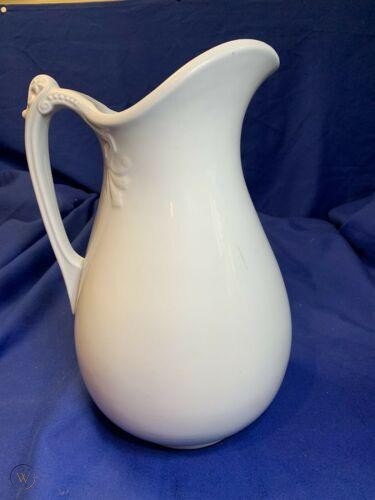
IRONSTONE IN AMERICA
While pottery makers flooded the ironstone market, one American manufacturer stands out. Homer Laughlin and his brother, Shakespeare Laughlin, established Laughlin Pottery in Ohio in 1870. Shakespeare left the company nine years later, and just as the 20th century began, a group of investors from Pittsburgh purchased it from the Laughlin family. In 1936, Joseph Wells, Sr, the son of William Wells, one of the original investors, hired Frederick Hurten Rhead as design director. In 1936 Rhead created the most popular product the company would ever make, the iconic Fiestaware. Made in bright colors and Art Deco shapes, the brand is still highly collectible.
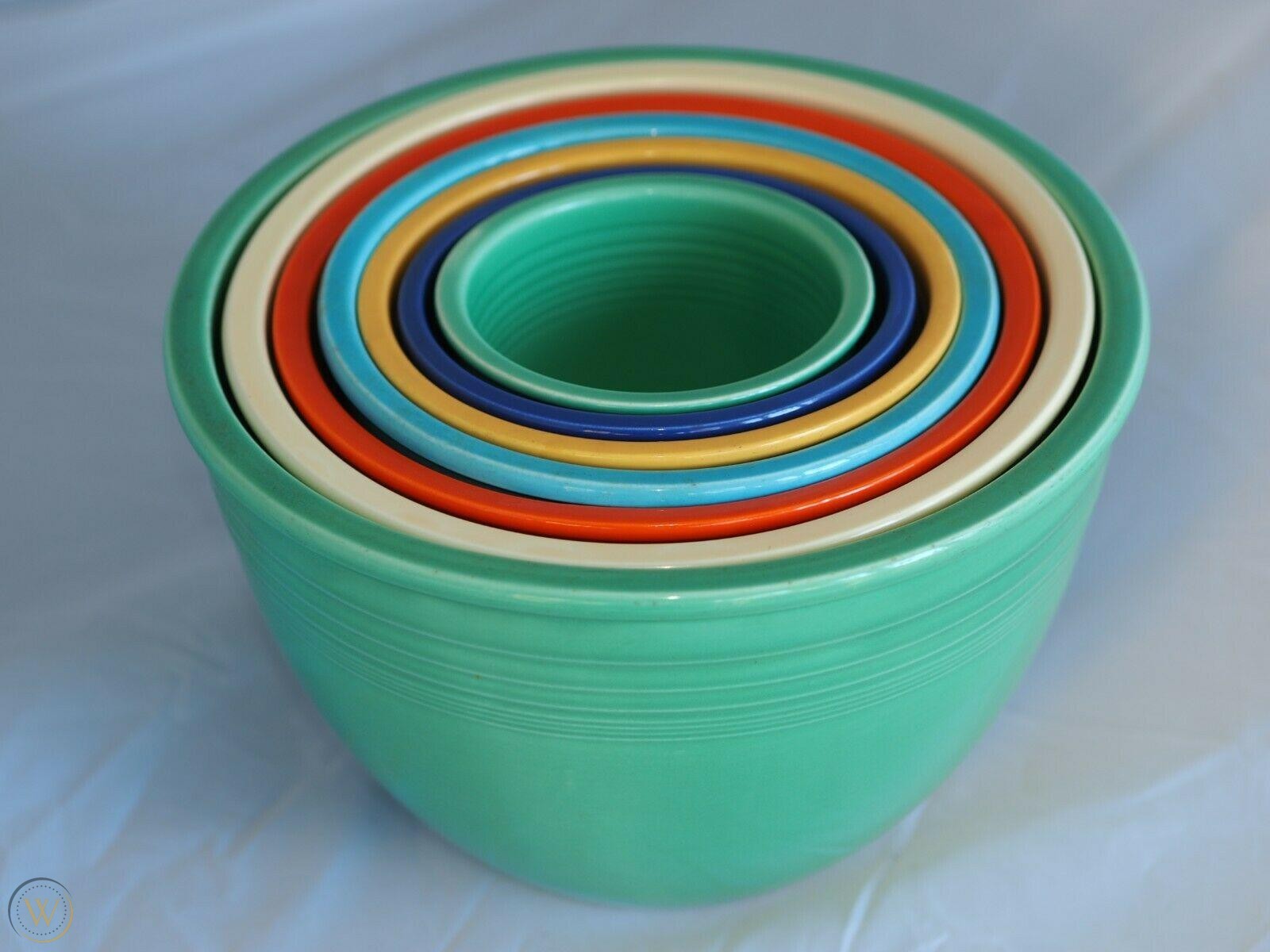
While Fiestaware was known for its color, the styles changed in the 1950s, and pastel and white items were more in demand. Laughlin ceased production of Fiestaware in 1973, but it reappeared in 1986 via Bloomingdale’s
COMMERCIAL IRONSTONE
One of the reasons ironstone ceramics have stood the test of time is that the items are affordable and durable. It can be made to look elegant, like fine porcelain, but is much cheaper to make and doesn’t break as easily. Many companies at the turn of the century were making products from ironstone. Still, one, Buffalo Pottery, made a name for themselves in supplying diners, restaurants, hotels, and even railroads with dishware that could stand up to crowds and rough handling.
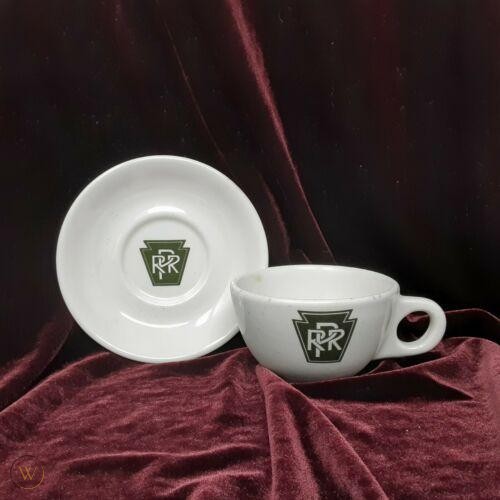
Another well-known company that produced ironstone restaurant ware was Syracuse China. Their design, dubbed “Econo-Rim,” was suited to restaurants and dining cars, where space was limited. The line was a huge success; salesmen from the company had given out over 2,500 samples, and orders flooded into the factory before production could even begin.
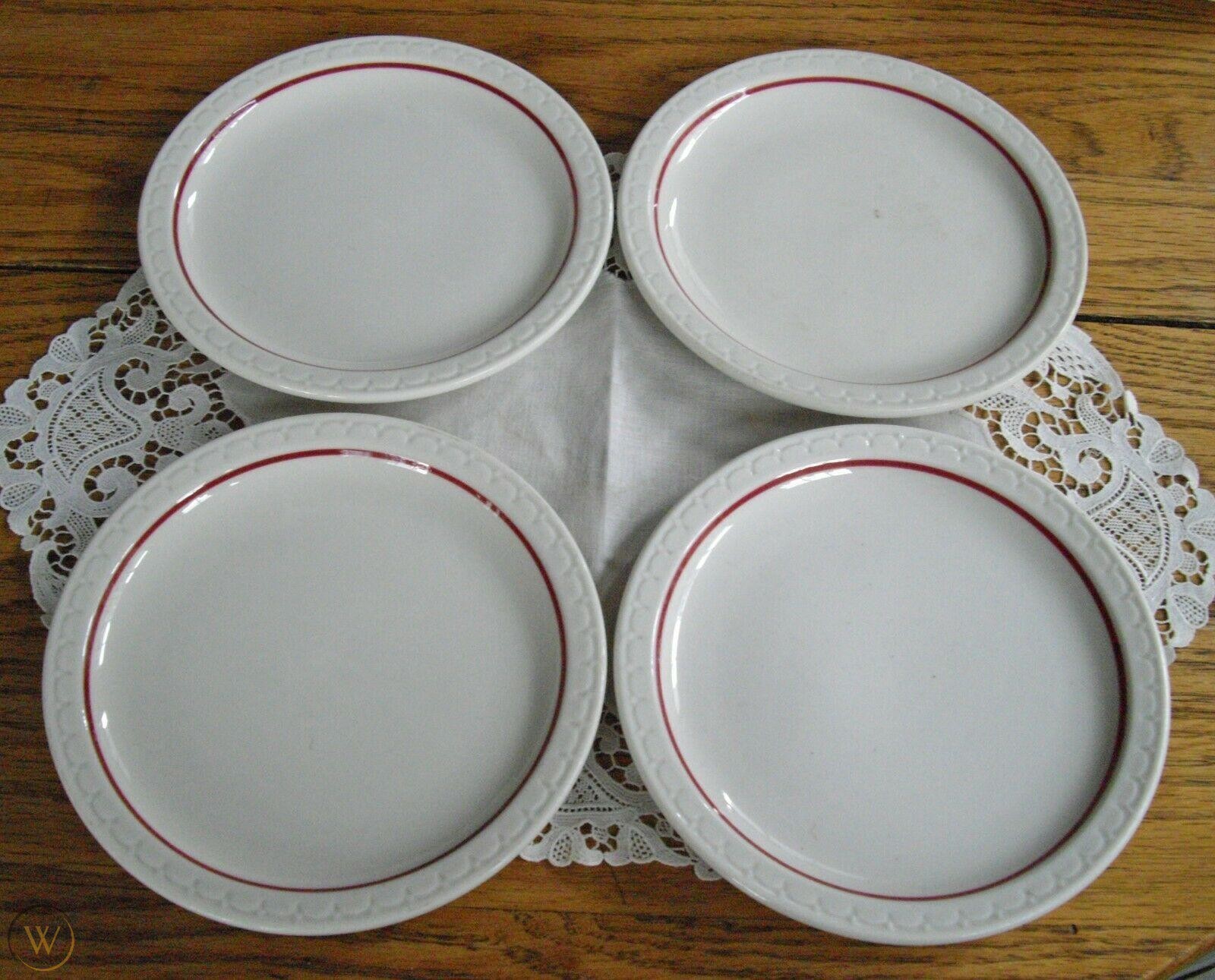
Syracuse knew how to market their wares before influencers were even a thing. They printed cards that proclaimed the holder to be a member of the “Turner Over Club” (later changed to the Turn Over Club.) These cards depicted a person turning over his soup bowl to ensure the restaurant he was in was using only the best china. The cards themselves are also collector’s items.
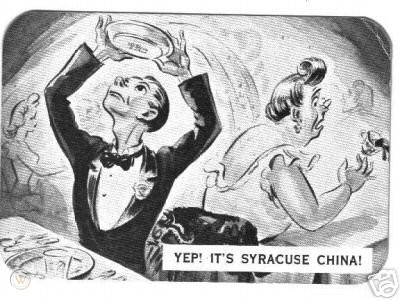
VINTAGE BUT MODERN
As with all vintage items, they were the latest and greatest when they first appeared. From clothing and baseball cards to furnishings or china, every antique was, at one time, modern and new. As time goes on, the market determines which vintage items will have a re-birth and which items will stay in the past. A huge trend now in home décor and furnishings is Modern Farmhouse. Some homeowners will buy reproductions of vintage kitchen items, signs, or farm implements, but others will want the real deal. Ironstone china, especially the early plain white pieces, are a perfect addition to a Modern Farmhouse theme.
Brenda Kelley Kim lives in the Boston area. She is the author of Sink or Swim: Tales From the Deep End of Everywhere and writes a weekly syndicated column for Gannett News/Wicked Local. When not writing or walking her snorty pug Penny, she enjoys yard sales, flea markets, and badminton.
WorthPoint—Discover. Value. Preserve.
The post Ironstone: A Very Modern Farmhouse Trend appeared first on WorthPoint.
